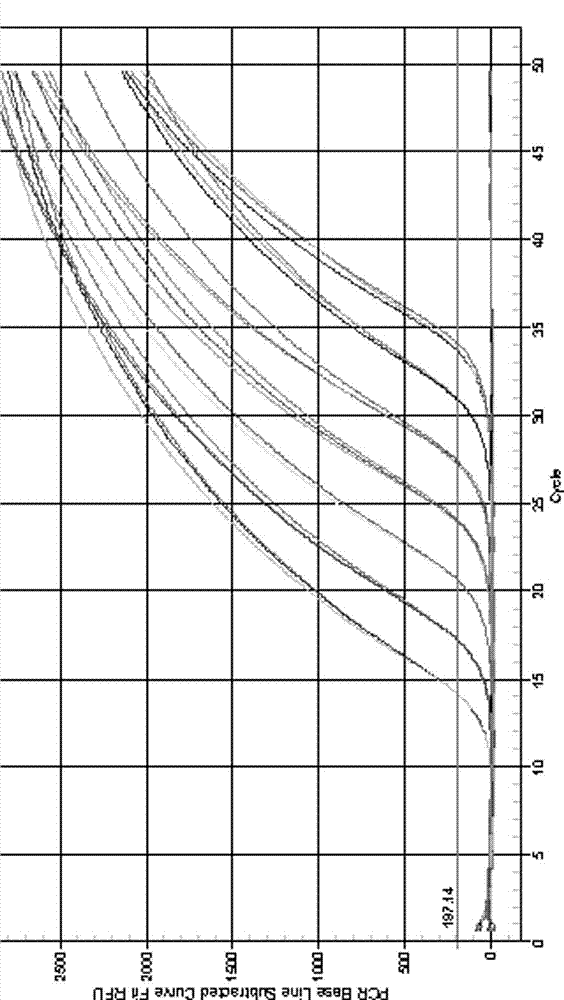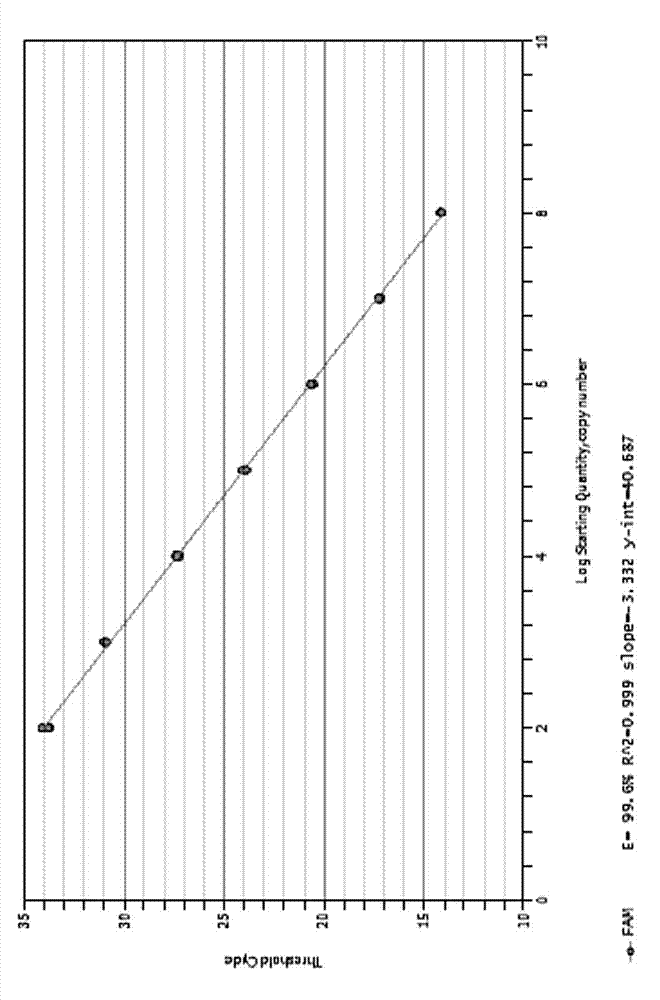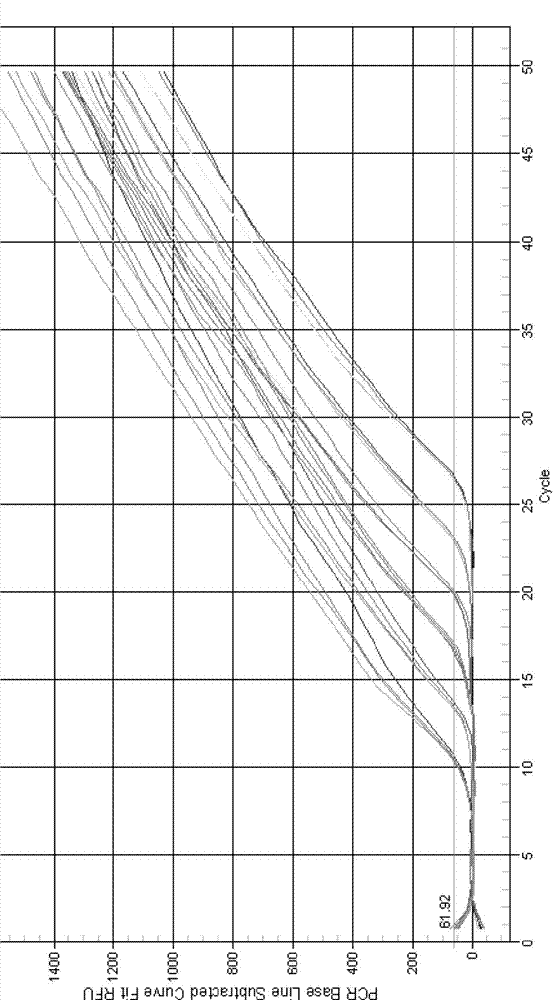Method for quantifying microorganisms for producing lipopeptide surfactant in microbial flooding reservoir
A surfactant and microbial oil displacement technology, which is used in the determination/inspection of microorganisms, biochemical equipment and methods, fluorescence/phosphorescence, etc., can solve the problem of poor repeatability, inability to quantitatively determine the amount of surfactant-producing microorganisms, and low accuracy. and other problems, to achieve the effect of simple operation, high sensitivity and accuracy, and strong specificity
- Summary
- Abstract
- Description
- Claims
- Application Information
AI Technical Summary
Problems solved by technology
Method used
Image
Examples
Embodiment 1
[0047] 1. Design and synthesize primers
[0048] Search for the lipopeptide synthase gene of lipopeptide surfactant-producing microorganisms in GeneBank, compare their homology, select the sequence of the conserved region of the gene, and design primer pairs according to the primer design principles. Bao Bioengineering (Dalian) Co., Ltd. Company Synthesis.
[0049] The sequences of the primer pairs are
[0050] srfAF 5'-CAAAAKCGCAKCATACCACKTTGAG-3'
[0051] srfAR 5'-TCA TAR AGC GGC AYA TAT TGA TGC-3'
[0052] 2. Optimization and establishment of fluorescent quantitative PCR reaction program and reaction system
[0053] The optimization of reaction conditions mainly includes Mg 2+ concentration, primer-probe concentration ratio, and annealing temperature. In the Real-TimePCR reaction program, the reaction system was fixed, different annealing temperatures were adjusted (55°C-65°C), and the same concentration of lipopeptide-producing microorganism Bacillus subtilis TH-2...
Embodiment 2
[0081] Example 2: The comparison between the quantitative method of lipopeptide surfactant-producing microorganisms in microbial flooding reservoirs and the traditional method of measuring oil drainage circle and surface tension to analyze oil reservoir lipopeptide-producing microorganisms
[0082] The fluids produced by 6 oil wells in a certain block of Shengli Oilfield were taken respectively, and after corresponding treatment, they were tested by oil drainage circle method, surface tension test and quantitative analysis of lipopeptide-producing microorganisms.
[0083]
[0084] Table 3 Quantitative detection results of oil drainage ring, surface tension and lipopeptide-producing microorganisms in different oil wells
[0085]
[0086] It can be seen from the results that the oil expulsion circle method and surface tension measurement can indeed reflect the presence or absence of lipopeptide biosurfactant-producing microorganisms in reservoir samples, and these data can b...
PUM
 Login to View More
Login to View More Abstract
Description
Claims
Application Information
 Login to View More
Login to View More - R&D
- Intellectual Property
- Life Sciences
- Materials
- Tech Scout
- Unparalleled Data Quality
- Higher Quality Content
- 60% Fewer Hallucinations
Browse by: Latest US Patents, China's latest patents, Technical Efficacy Thesaurus, Application Domain, Technology Topic, Popular Technical Reports.
© 2025 PatSnap. All rights reserved.Legal|Privacy policy|Modern Slavery Act Transparency Statement|Sitemap|About US| Contact US: help@patsnap.com



